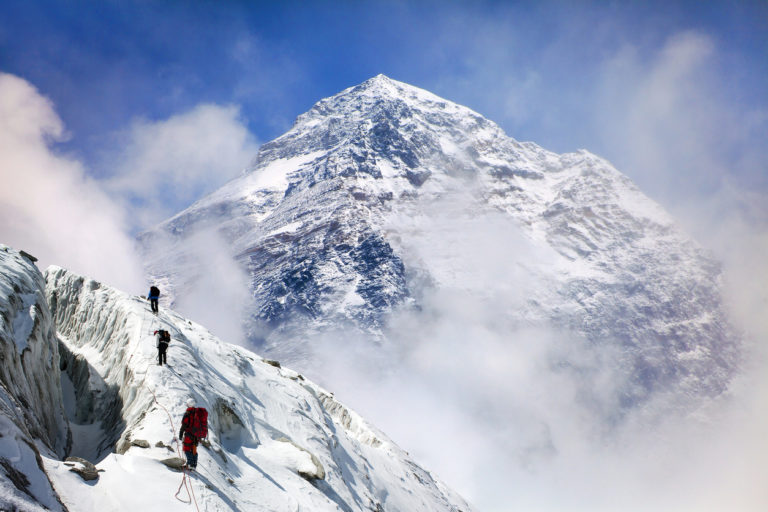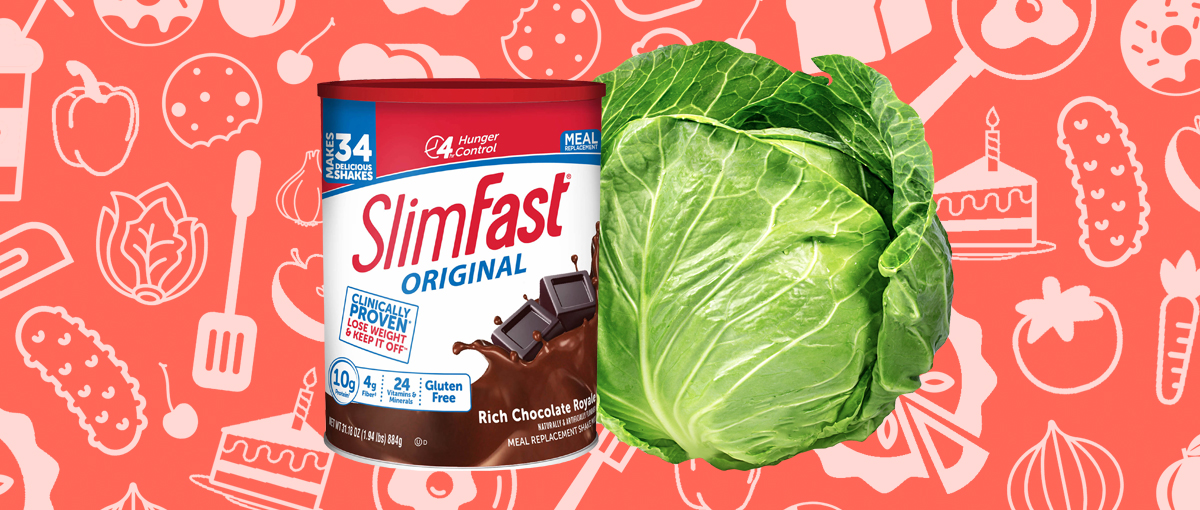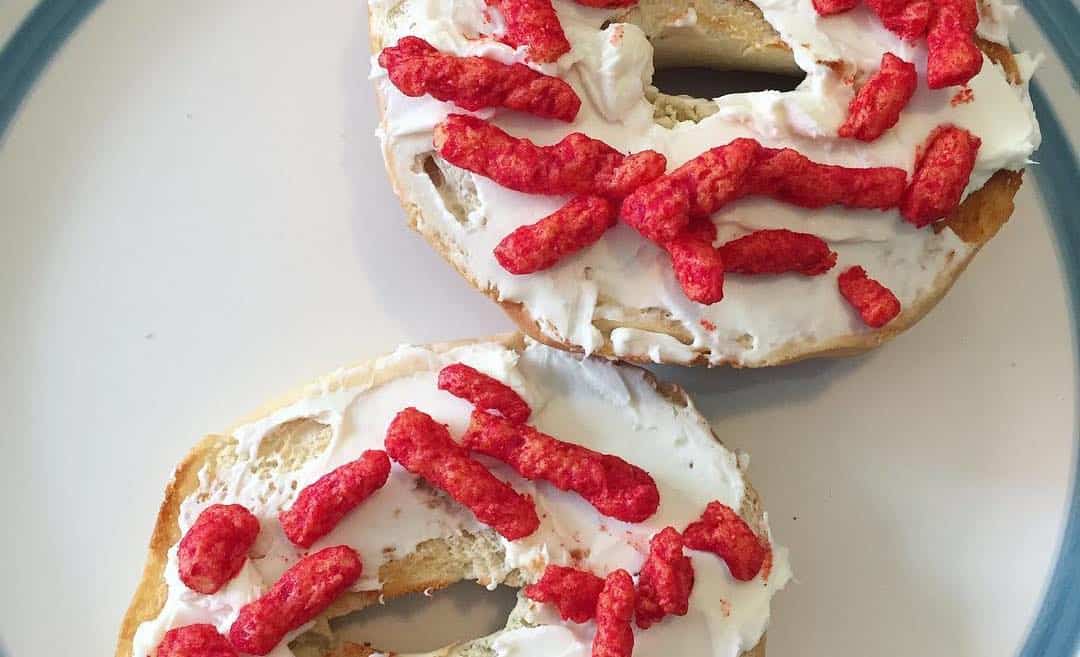Every year, hundreds of people attempt to climb Mount Everest. But with the rise in popularity of adventure tourism, the climb up the almost 30,000-foot mountain has become even more deadly. In 2019, there have been 11 deaths during the Everest climbing season, Reuters reported.
According to mountaineer Nick Hollis, the deadliest Mount Everest climbing season since 2015 is due to “incompetent climbers” moving slowly through the route, causing bottlenecks to form and longer delays.
With Mount Everest becoming more popular than ever, on top of extreme weather, it’s crucial for climbers to be as prepared as they can possibly be before taking on the hike that takes approximately two months to complete.
Throughout those two months, it’s not uncommon for hikers to lose up to 20 pounds from the intense climb. In addition to being physically demanding, hikers at higher altitudes experience loss of appetite, which makes what they eat key for survival.
Thinking of tackling the beast that is summiting Mount Everest yourself?
Here are some foods experienced climbers have packed and eaten to make it all the way to the top.
1. Dried Reindeer Heart
Don’t go running to your nearest grocery store yet.
Reindeer heart isn’t for everyone, but freeze-dried and dehydrated food, in general, is key to climbing any mountain as strenuous as Mount Everest. Professional adventurer Randi Skaug was the first Norweigan woman to climb the Seven Summits, Vice reported.
One of Skaug’s usual mountain climbing meals just so happens to be dried reindeer heart, which she says contains 80 percent protein.
It might sound extreme, but according to Skaug, it tastes like nuts.
2. Mackerel in Tomato Sauce
Again, not necessarily an essential when hiking, but seasoned hiker Randi Skaug swears by this combination — especially during one of her Everest climbs.
Mackerel in tomato sauce comes in a package-ready tin can and is loaded with fat and protein. During a climb, Skaug trekked through awful weather only to spend 10 minutes at the peak, after taking 12 hours to get to the summit, and then had to spend 10 hours getting back down.
Throughout that time, Skaug relied on her tin can superfood, one piece of chocolate, and half a liter of water.
3. Olive Oil
Now, don’t go chugging bottles of olive oil to prepare for a climb.
It’s a great addition for quick snacks and meals during your hike. “You could add it to anything and make it taste better,” photography Cory Richards told Bon Appétit. Which is a trick that can be especially handy, since altitude can change the way food tastes.
If you need some food inspo, Ballinger suggests drenching Spam in olive oil.
In other words, a bit of olive oil makes everything better.
4. Nuts
Nuts (specifically almonds) are great for snacking on during a climb.
Most nuts are generally healthy because they contain polyunsaturated fats and monounsaturated fats that help lower blood pressure and cholesterol. They’re also rich in fiber, vitamins, minerals, and protein.
In an interview with USA Today’s For The Win, mountain climber Adrian Ballinger said he had to completely change his diet to focus on fats and proteins.
Since nuts are chock-full of them, Ballinger brings plenty during his climbs.
5. Oatmeal
Climbers — they’re just like us! Kind of.
Oatmeal is quick and easy to eat for breakfast, even if you aren’t climbing one of the tallest mountains in the world. All it takes is a little hot water (even lukewarm water will do the trick) to mix with the oats and you have yourself a meal.
It can be pretty difficult to cook anything on Mount Everest, so oatmeal is one of the easier options.
6. Eggs

As you can imagine, the higher you get above sea level, the lower the temperature of the flame you’re trying to cook on gets.
This is because of how little oxygen can be in the air at higher altitudes. Now, it might take a while (probably 20 minutes or so), but it’s an easy snack and is a good source of nutrients.
It can also remind you of home-cooked breakfasts when you’re in the middle of nature, trying to complete a crazy feat, and are possibly all by yourself.
7. Cheese
Sorry lactose-intolerant mountain climbers — cheese is a great food option when going on big hikes.
Cheese is a good source of protein and calcium, which is essential for “healthy bones and teeth, blood clotting, wound healing, and maintaining normal blood pressure,” according to Medical News Today.
Cheese isn’t a miracle snack by any means, but since Mount Everest climbers can be at risk for blood clots, it might not hurt to have a few slices in your backpack.
8. Chocolate
We can really get on board with this one.
Whether it’s a cup of hot chocolate or a solid candy bar, a little sugar isn’t the worst thing to eat when hiking. When climbing Mount Everest, you’re burning so many calories, but the higher you go, the less of an appetite you’ll have.
Snacking on a bit of chocolate every now and then can keep the calories coming.
Long-term, it’s not the best source of energy, but it still does the trick. And it’s also tasty AF.
9. Local Vegetables

Be a sustainable traveler and support the community by buying and eating local produce.
Around Mount Everest, you’ll be able to stock up on onions, cabbage, and carrots, according to MountEverest.net. Just be sure to wash them really well with purified water, according to reviews on TripAdvisor.
Another reviewer recommends taking it a step further and treating them with iodine solution, just to be on the safe side.
The last thing you want is to get sick while climbing Everest.
10. Coffee
Have you ever tried making a cup of coffee in freezing weather?
It’s not easy, but it can be totally worth it when you need the extra energy and something to warm up your bones. It might not be the hot cup of joe that you’re used to.
But coffee is coffee, right?
According to mountain guide company Alpenglow Expeditions, the caffeinated drink is one of the guide favorites when climbing Mount Everest. We can imagine why.
11. Garlic

Garlic might not be the greatest-smelling vegetable, but it has tons of health benefits.
It can help reduce blood pressure, lower cholesterol, and might even help with bone health, Healthline reported. One study also looked into how garlic can help with anti-fatigue.
That’s probably why it’s a famous Nepali remedy for altitude adaptation.
Experienced climbers say that it’s not uncommon to see sherpas that frequent the mountain have plenty of garlic on hand.
12. Soup
Similar to oatmeal, soup can be very easy to make.
Plus, it doesn’t have to be fancy. Pre-made soup cups or instant soup packets are typical food items that climbers bring with them.
If there are a few extra minutes to spare, climbers can also throw a few ingredients together to make “real” soup.
It’s all about using what you have on hand to help get the job done and keep your stomach from grumbling.
13. Energy Gels
What exactly are they?
Energy gels are made of simple sugars and are commonly used among marathon runners to get a pick-me-up during a race, according to Runner’s World.
It turns out that they’re also popular among mountain climbers.
Climber Jeff Ward told Climbers.com that energy gels and bars are quick and easy options to get you through a long route.
14. Soylent
[fm_youtube url="https://www.youtube.com/watch?v=qXRG_GxXAm0&feature=youtu.be"]This one isn’t too surprising.
In order to consume as many calories as possible each day during his Mount Everest climb, Andrew Ballinger drank a liter of Soylent with meals, he said in an interview with Bon Appétit. According to Ballinger, each pouch is loaded with 2,000 calories.
Not to mention, apparently, the shakes taste like pancake batter.
It’s a two-for-one deal.
15. Any treats, really
To keep up your appetite and make sure you’re eating enough, it’s important for mountain climbers to bring food they’ll actually enjoy.
It’s not the time to test out new food, especially since climbers might not know how their bodies will react to it in higher altitudes.
When going with mountain climbing companies, there might be even more leeway in what treats you can bring.According to Mount Everest guide Adrian Ballinger, climbers on Alpenglow Expeditions are allowed to bring boxed wine for dinner, beer, and other treats.
Although it’s probably not encouraged to go overboard.
What do you think of these options? Let us know if you think you could handle these restrictions or if you’d be craving something sweet the whole time.








